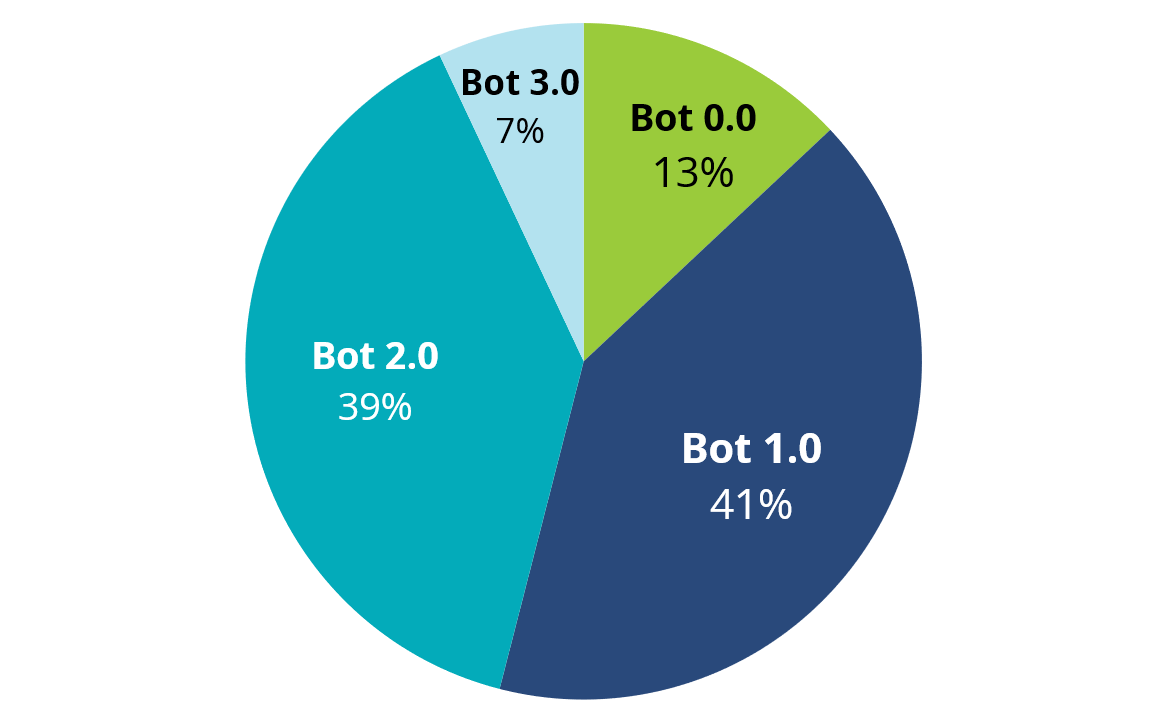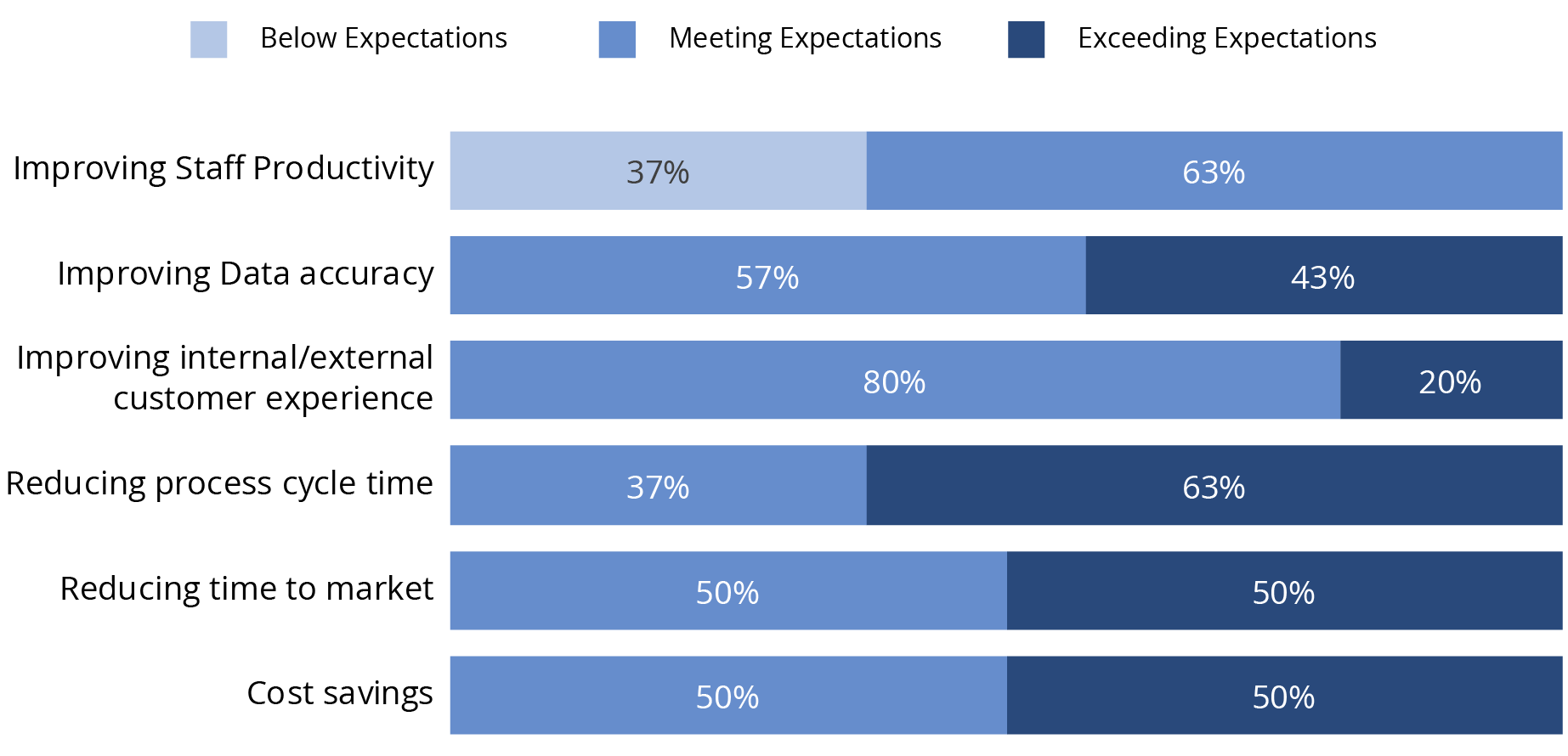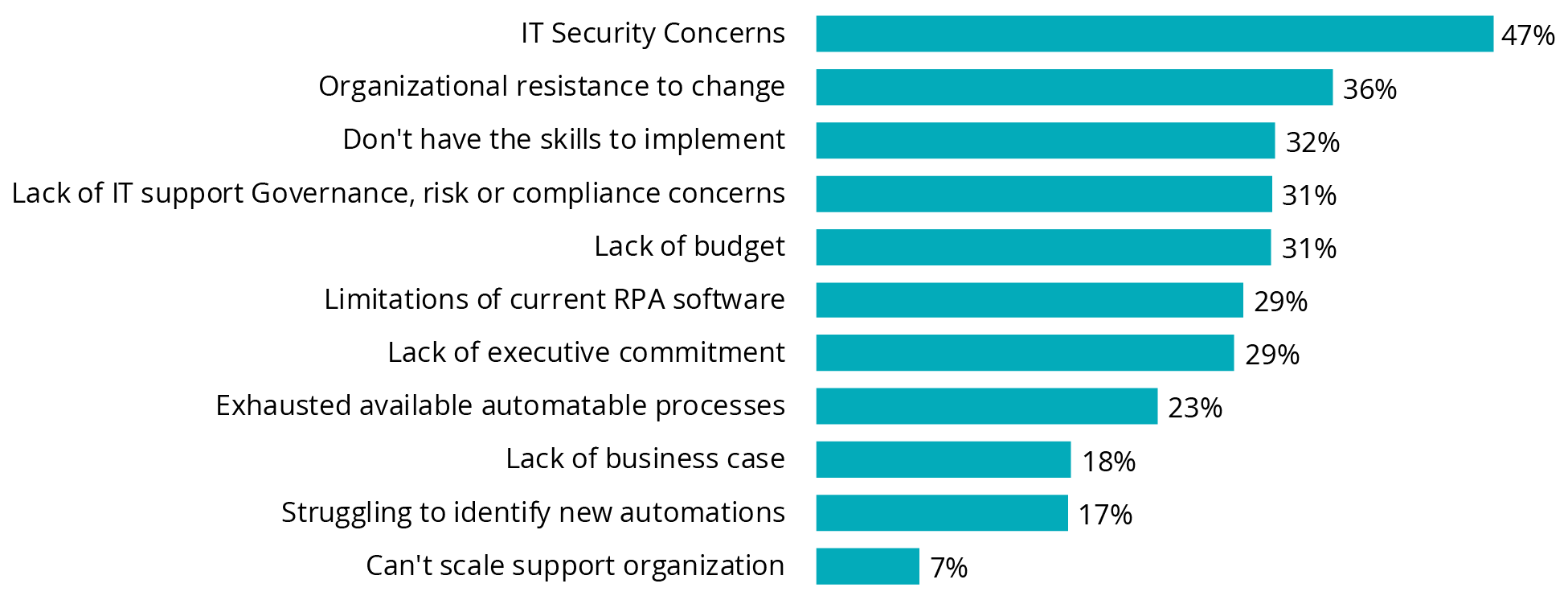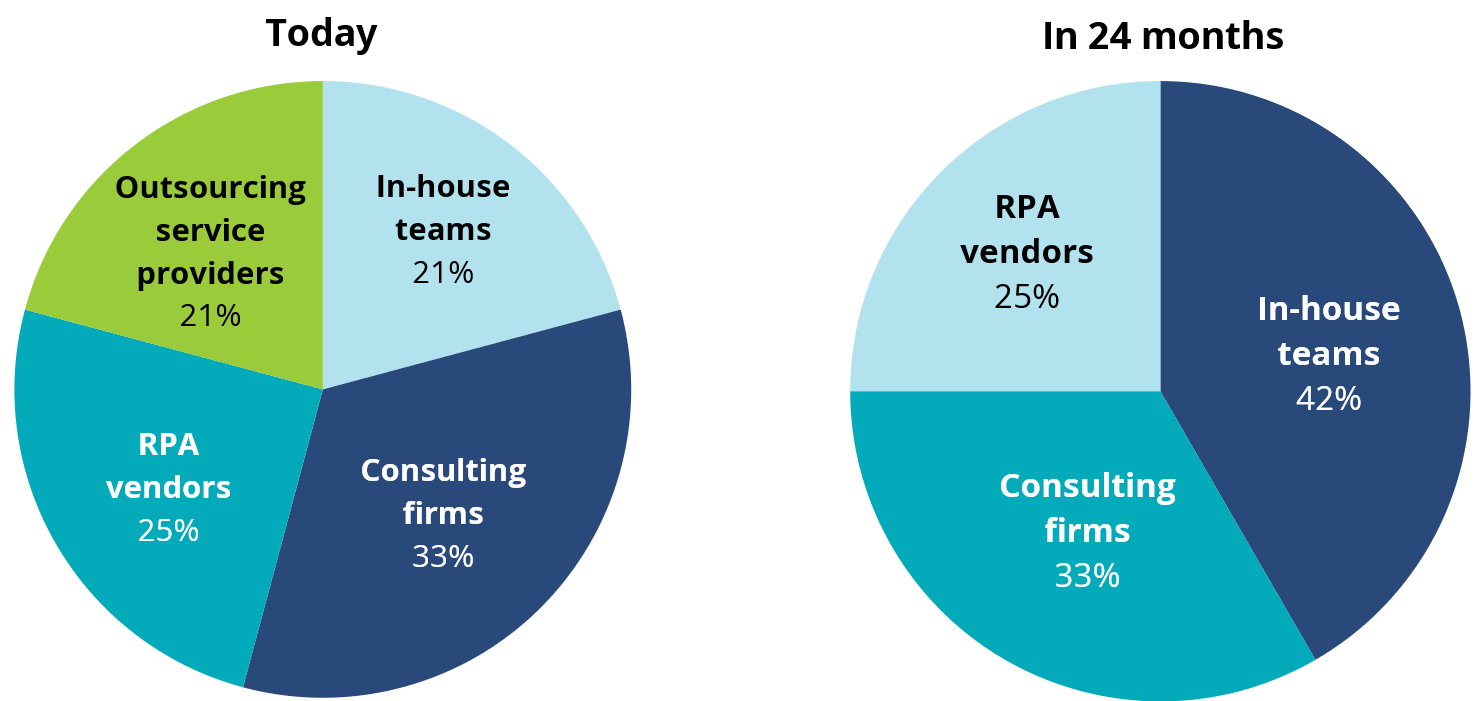As the automation technology landscape continues to expand, enterprises of all sizes and geographies are working to accelerate their automation programs. Enterprises first must understand where they stand in comparison to others and the strategies and tactics that are most likely to make them successful.
Our recent ISG Insights study Enterprise Automation Capability Improves, but RPA Wall Still Looms explores the typical automation adoption profile and the most common obstacles and the best practices for accelerating adoption. It helps enterprises understand where they are relative to others and how they can scale automation initiatives across the business. We mapped the results of this study against the ISG Bot Framework, which combines both qualitative and quantitative measures to assess an organization’s automation capability. ISG uses an automation-capability scale ranging from Bot 0.0, which represents nascent automation capability, to Bot 3.0, which represents market-leading capability (Figure 1).
Figure 1: Automation Capability Distribution

Source: ISG Insights - RPA Deployment & Capability Study 2019, n=346
This ISG Insights study finds that, while many organizations are improving their automation capability, the “RPA wall” is a significant obstacle for companies at the lower end of the capability scale, what we call Bot 1.0 and 2.0 companies. Enterprises that hit the “RPA wall” typically struggling to get beyond automating 10 to 20 processes. Such companies may not have an effective strategy or any strategy at all.
We find the companies that are struggling to move beyond Bot 2.0 to 3.0 are struggling primarily because their automation centers of excellence (CoEs) are not sufficiently mature or productive. Many organizations start with a centralized automation CoE and evolve to a more federated model as they grow and mature; this movement also contributes to the length of time in moving from Bot 2.0 to 3.0. Over 70 percent of Bot 3.0 companies use a federated operating model for their automation CoE.
Interestingly, the study results show that as companies advance their RPA capability, their goals evolve from cost savings to increased productivity. Enterprises at the lower end of the capability scale say their biggest goals for using RPA are cost savings, improving customer experience and increasing revenue, while the more capable companies say their expected benefits from automation are improved staff productivity, data accuracy and customer experience. Also, we observe that companies that have a greater automation capability are exceeding their expected business results across nearly every category (Figure 2).
Figure 2: RPA Goals Business Outcome – Bot 3.0 Companies

Source: ISG Insights - RPA Deployment & Capability Study 2019, n=346
Even though almost all Bot 3.0 companies are meeting or exceeding their expectations for cost savings, reduced cycle time, improved data accuracy, reduced time to market and customer experience, they still face numerous challenges depending on their level of automation maturity (Figure 3). Enterprises at the lower end of the capability scale – Bot 1.0 and 2.0 companies – say their biggest obstacles to automation are security concerns, skills limitations and organizational resistance to change, while Bot 3.0 companies say their progress is most often hampered by software limitations, as well as security concerns and lack of skilled employees.
Figure 3: Challenges Companies Face with RPA

Source: ISG Insights - RPA Deployment & Capability Study 2019, n=346
Nevertheless, Bot 3.0 companies expect to make significant changes to their staffing models over the next two years, with plans to bring automation skills in-house and hire more trained workers (Figure 4).
Figure 4: RPA Implementation and Staffing Model – Bot 3.0 Companies

Source: ISG Insights - RPA Deployment & Capability Study 2019, n=346
The study also identifies the critical success factors for companies that are using their high-performing CoEs to scale automation across the enterprise and uses cognitive technology along with RPA to drive business results. We find that Bot 3.0 companies have an automation roadmap, active executive support and a proven process to ensure bots are available and secure. These companies also successfully train and communicate with their organizations the benefits of automation, regularly look for ways to reduce errors in their bots, and regularly track and report on the return on investment (ROI) of their automation programs.
The full study reveals many more interesting findings about the current landscape of enterprise automation capability, including the use of multiple automation vendors and the expansion of automation beyond the back office. To find out more, please contact Stanton Jones at [email protected].
About the authors
Amar Changulani is an Assistant Manager with ISG Research.
Tracy Lipasek, Partner, Robotic Process and Cognitive Automation Practice is a passionate change agent on behalf of clients driving increased quality, value optimization, governance maturity, and customer satisfaction. At ISG, Tracy is the Global Operations Partner for the Automation Service Line. She brings over 20 years of IT experience, across a breadth of capabilities including Systems Development, Governance, Service Management, Quality Assurance, and Program Management.
